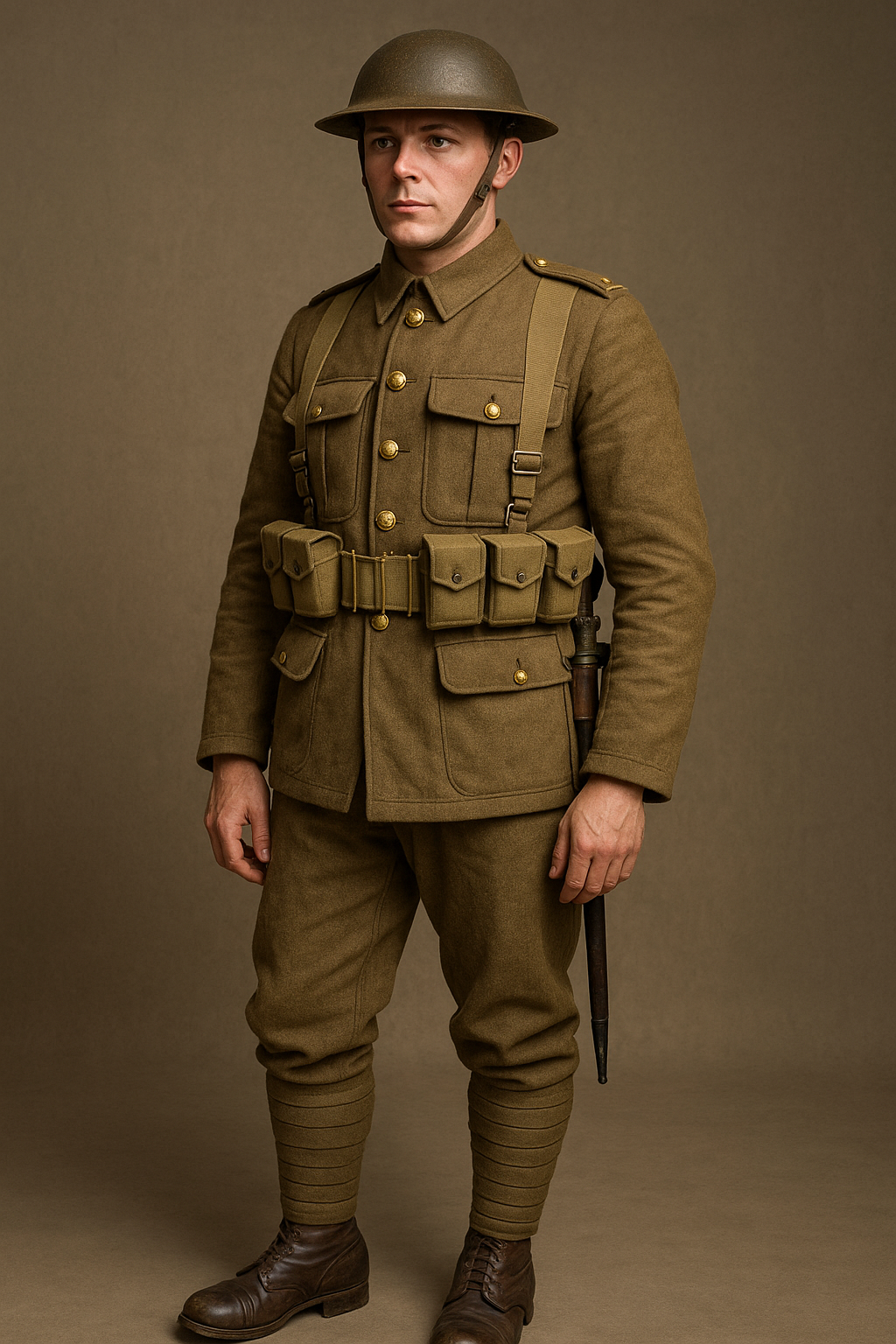
WW1 Uniforms for Sale: A Complete Guide to British Soldier & Officer Uniforms
Published on Aug 17, 2025
Introduction
Did you know that over 8 million British soldiers served during the First World War? Each of them wore a uniform that has since become a symbol of courage, sacrifice, and history.
Today, enthusiasts, collectors, and reenactors look for WW1 uniforms for sale—not only to preserve history but also to connect with the past tangibly. Whether you’re a beginner looking for your first piece or a serious collector searching for authentic gear, this guide will help you understand what makes a WW1 British uniform unique, what to look for when buying, and how to avoid common pitfalls.
The History Behind the WW1 British Soldiers' Uniform
The WW1 British soldiers' uniform was more than just clothing—it was designed for survival, practicality, and identification on the battlefield.
- Standard Issue (1902 Service Dress): The khaki uniform became iconic during WW1. It was practical for camouflage compared to the bright red coats worn before.
- Fabric & Design: Made of wool serge, it included a tunic with large pockets, trousers, puttees (leg wrappings), and the iconic Brodie helmet introduced in 1915.
- Officer vs. Soldier: The WW1 British officer uniform often used higher-quality wool, tailored fits, and additional insignia compared to standard soldier gear.
What Color Are British Uniforms in WW1?
One of the most common questions is: What color were British uniforms in WW1?
The answer: khaki drab.
This muddy-brown shade blended with the landscapes of Europe, giving British soldiers a strategic advantage. But it wasn’t one exact shade—variations existed depending on the supplier and wear. Officers sometimes had slightly different hues, making them stand out on occasion.
WW1 Uniforms for Sale: Where to Find Them (H2)
For enthusiasts today, there are three main sources to find WW1 uniforms for sale:
1. Reproduction Uniforms
Perfect for reenactors and museums.
- Affordable and practical for events.
- Widely available from historical suppliers.
- Example: Companies like Soldier of Fortune (UK) or What Price Glory (US).
2. Authentic Collectibles
Best for serious collectors.
- Genuine WW1 uniforms are rare and costly.
- Authentication is key—beware of reproductions being passed off as originals.
- Prices can range from a few hundred to several thousand dollars.
3. Auction Houses & Online Marketplaces
- Christie’s, Bonhams, and online auction sites often feature WW1 gear.
- eBay also has listings, but caution is required due to fakes.
Tip: Always request provenance (proof of history) when buying an authentic uniform.
How to Identify an Authentic WW1 British Officer Uniform (H2)
Spotting an authentic WW1 British officer uniform can be challenging but rewarding.
Look for:
- Material: High-quality wool, often better than soldier uniforms.
- Rank Insignia: Pips, crowns, and regimental insignia on shoulder straps.
- Cut & Tailoring: Officers often had custom-fitted tunics.
- Badges & Decorations: Campaign medals, division patches, and rare insignia add value.
Pitfall to Avoid: Many sellers “add” badges to boost prices. Research regiment history to verify authenticity.
Current Trends in Collecting First World War Uniforms
The market for First World War uniforms is growing, especially with the rising popularity of reenactment groups and WW1 centenary commemorations.
- Reenactment Boom: More events worldwide are fueling demand for reproduction uniforms.
- Investment Value: Authentic uniforms are appreciating, especially rare officer sets.
- Digital Collecting: Virtual museums and 3D uniform replicas are emerging as new trends.
Actionable Steps for Beginners in WW1 Collecting
If you’re new to collecting WW1 British uniforms, here’s a roadmap:
- Start with Reproductions
- Ideal for learning without big risks.
- Wear them at reenactments or display them at home.
- Learn the History
- Study regiments, ranks, and insignia.
- Books, online forums, and museum visits help deepen knowledge.
- Network with Collectors
- Join history clubs or online communities.
- Attend militaria fairs to see items firsthand.
- Buy from Trusted Dealers
- Reputable militaria shops specialize in authentic gear.
- Always get a receipt and authentication details.
Common Pitfalls When Buying WW1 Uniforms for Sale (H2)
Many beginners fall into traps when purchasing WW1 uniforms for sale. Here’s what to watch out for:
- Fake Reproductions Sold as Originals: Always verify authenticity.
- Moth Damage & Wear: Wool is prone to moth holes. Check carefully.
- Missing Insignia: Some sellers remove badges to sell separately.
- Overpaying: Research fair market prices before committing.
Preserving and Displaying Your WW1 British Soldier's Uniform
Once you own a WW1 British soldier's uniform, preserving it is crucial:
- Storage: Use acid-free garment bags and avoid plastic.
- Climate Control: Keep in a cool, dry space away from sunlight.
- Display Cases: For authentic uniforms, consider UV-protected cases.
- Regular Checks: Inspect for moths, mold, or fabric decay.
Conclusion
The story of the WW1 British uniform is one of resilience and history. From the muddy trenches of the Somme to today’s collectors’ rooms, these uniforms symbolize sacrifice and courage.
For history lovers, reenactors, or collectors, exploring WW1 uniforms for sale opens a world of discovery. Whether you start with reproductions or aim for authentic officer tunics, the key is research, caution, and passion for history.
